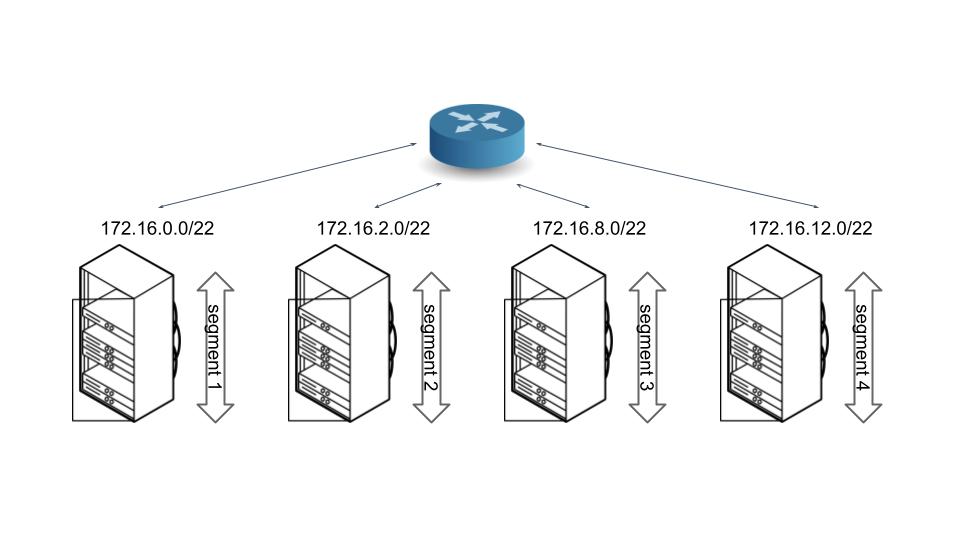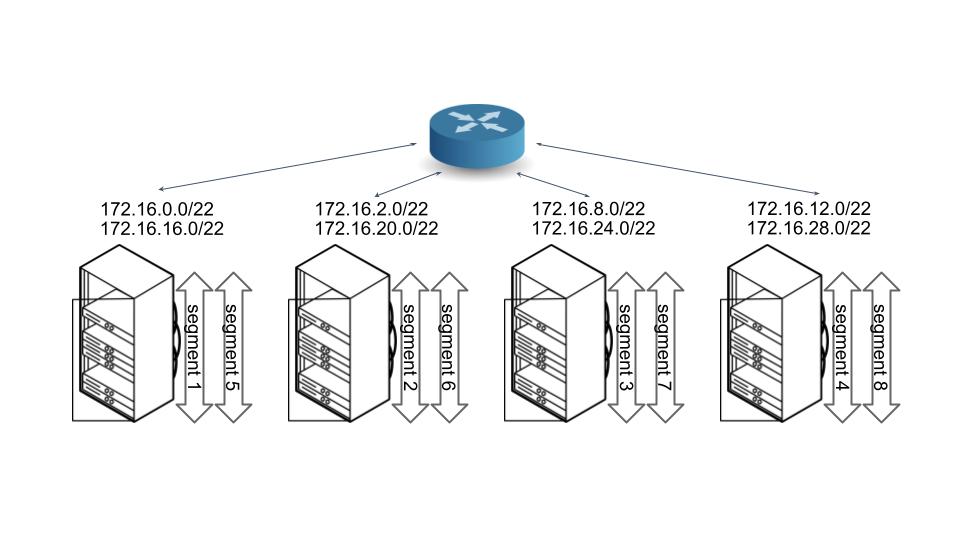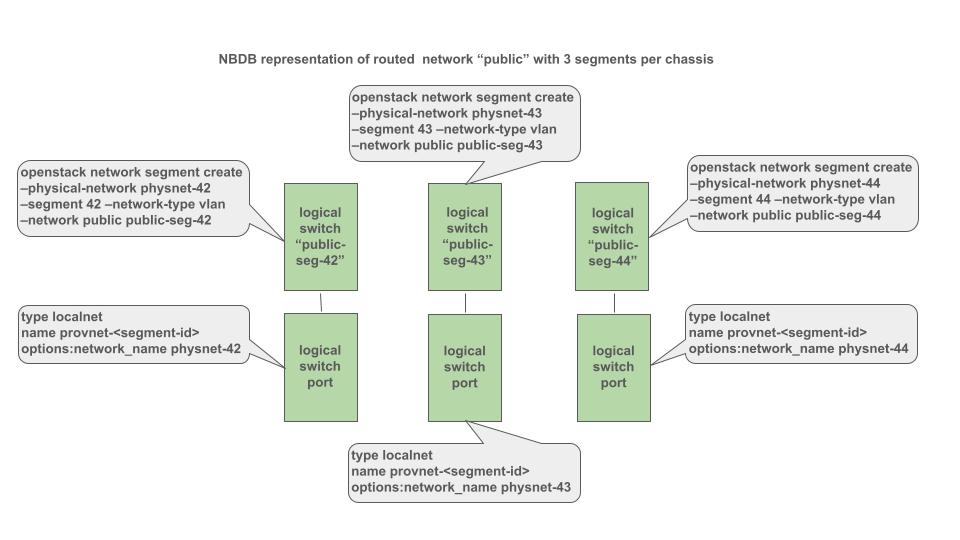Routed Provider Networks with Multiple Segments per Host for ML2/OVN¶
https://bugs.launchpad.net/neutron/+bug/2130453
As implemented by the ML2/OVN driver, routed provider networks are limited to one segment per host [1]. This specification proposes to remove such limitation, enabling multiple segments per host per network.
Problem Description¶
Originally, all Neutron networks were single L2 broadcast domains. In such networks, performance degrades as traffic grows as a result of an increasing number of active VMs/ports. Routed provider networks were implemented to overcome this limitation and enable users to create “large networks”, where a large number of VMs/ports can be connected without incuring the performance penalty of large single L2 broadcast domains. As shown in the following diagram, routed provider networks are constituted by several L2 segments (broadcast domains) stitched together by a router into one L3 “large network”. In this arrangement, each individual segment handles only a portion of the total network traffic, improving overall performance. The router is not part of Neutron; it is provided by the underlying networking infrastructure [2].

In routed provider networks each segment is connected to a group of hosts, as shown in the following diagram. In the optimal situation, the network traffic generated by the workload running in the hosts doesn’t exceed the capacity of the corresponding segment.

Recently, though, some operators have found this not to be the case. They can comfortably accomodate in the hosts workloads that generate network traffic that exceeds their segment capacity. In such situations, more than one segment per host is necessary if the deployers are going to fully utilize their compute resources, while at the same time achieving the benefits of the routed provider networks, by effectively limiting the size of the individual L2 broadcast domains. This is shown in the following diagram.

Proposed Change¶
This specification proposes to implement each segment in a routed provider network as an OVN Logical Switch. Each one of these logical switches will be associated with a Logical Switch Port of type localnet, that will map the segment to a physical network in the hosts connected to it. As a consequence, for routed provider networks, the one-to-one mapping between a Neutron network and an OVN Logical Switch will no longer be true. The following diagram summarizes the proposed approach, using a Neutron network named public and segments with vlan-ids 42, 43 and 44 as examples:

At the chassis level, this design will be implemented as depicted in the following diagram:

In this diagram, the key features of the proposed design are:
The four bridges br-ex* represent the routed provider network named public depicted in the previous diagram with its three segments.
Each of the bridges br-ex-42, br-ex-43 and br-ex-44 represents one of the segments in the routed provider network.
For each segment, there will be a key-value pair in OVS’s external_ids:ovn-bridge-mappings. In the public network example we are using in this specification, for the physnet identified as physnet-43, the corresponding mapping is physnet-43:br-ex-43. It is the presence of these mappings that triggers the ovn-controller to configure the patch ports on the br-int side of the segment bridges.
There are two alternatives for the creation of the br-ex* bridges and the configuration of the br-ex side of the patch ports. They can be created automatically by Neutron or they can be created as a result of system administration activities. To select from these two alternatives, a large user of routed provider networks with the ML2/OVS driver was asked how frequently they have added segments to their hosts. They responded that they add segments every month. Based on this information, this specification proposes to develop an agent that will create bridges and configure them.
To implement the proposed new functionality, the following changes to the code are expected:
When a segment is created for a routed provider network, an associated Logical Switch and Logical Switch Port of type localnet will need to be created in the OVN NBDB. Correspondingly, these OVN resources will have to be removed when the segment is deleted.
When a port is created for a routed provider network, the creation of the associated Logical Switch Port will have to be deferred until the moment when the segment to which it is bound is known. Correspondingly, when a port is deleted, its associated Logical Switch Port will have to be removed from the correct Logical Switch.
The OVN maintenance and DB synchronization periodic jobs must be updated to account for the changes described in the previous two points.
For routed provider networks, there will be one metadata agent per segment in each host.
An agent will be developed that will be responsible for creating and configuring the bridges that represent the routed provider network segments.
